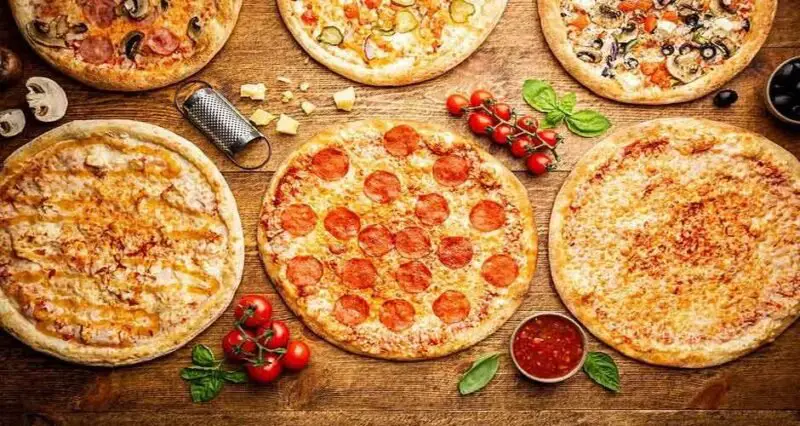
Making a pizza requires you to create various choices, from pizza type to toppings. But the pizza crust is as important as what you put on it. Unless you have a standard pizza order, that can make the experience of ordering a pizza seem daunting. And you are not alone in this.
This article will talk you through various pizza base options to help you make a more informed decision. Learn about the different kinds of crusts used to make pizza and find your new favourite style.
Thin Crust
Thin-crust pizza, a favorite for many, offers a healthier and tastier alternative to ordinary pizza crusts. The crispy texture of thin crust, in contrast to the often doughy nature of regular crusts, is a notable aspect.
However, due to its fragile nature, thin crust limits the number of toppings one can use, as excessive toppings can cause the pizza to disintegrate. When preparing thin-crust pizza, it’s important to remember that it cooks faster than other types of crusts, especially for those accustomed to thicker crust pizzas.
Thick Crust
There are those who prefer a doughy crust, and interestingly, the preparation process for thin or thick crust is quite similar. The main difference lies in the depth of the crust setting. Some thick-crust pizzas can have up to an inch of crust around the edge.
The main challenge in preparing thick-crust pizza is ensuring even distribution of dough, and a pizza stone can help in achieving a uniformly thick crust.
Stuffed Crust
Stuffed crust pizza, famously introduced by Pizza Hut in 1995, features a crust topped with cheese and tomato along the edges, rolled into a shape that encases these extra toppings. This not only adds flavor but also encourages the consumption of the crust.
Cracker Crust
Originating from Tuscany and popularized in North America, especially with Chicago’s fennel-flavored variant, cracker crust is known for its thinness. The goal is to stretch the dough as thin as possible, resulting in a translucent, brittle texture once baked. This type of crust is usually cut into square slices due to its delicate nature.
Flatbread Crust
Flatbread crust, a quick and light option, is a favorite for many due to its simplicity, as it doesn’t require yeast or rising time. Ideal for mini pizzas and appetizers, flatbread crust is versatile and bakes flat, living up to its name.
Cheese Crust Pizza
A variation of stuffed crust, cheese crust pizza is perfect for cheese lovers. It involves rolling dough and adding cheese before baking. While preferences vary, the consensus among cheese crust enthusiasts is that the gooier the cheese, the better. However, it’s important to be mindful of ingredients, as not all cheeses are vegetarian-friendly, like Parmesan which contains rennet.
Chicago Deep Dish
Unlike traditional pizza crusts that are rolled, Chicago deep dish crust is pressed and pinched into the sides of the pan, resulting in a thicker, savory pie crust-like texture. This crust takes longer to bake but offers a crispy finish.
Sicilian-Style Crust
Sicilian-style pizza crust, known for its thickness and unique baking process, is quite distinct from New York-style crust. It should be about an inch thick and is slowly cooked in oil in a deep pan, leading to a dense, chewy texture.
Coated Crust
Coated crust is a twist on stuffed crust, where the outer crust is seasoned with various coatings such as salt, pepper, sesame seeds, garlic, or Parmesan. This crust type can be adapted to be thin, thick, or flat, but it’s important to consider potential allergies, like nut or sesame seed allergies.
Greek Crust
Greek crust stands out with its spongy texture, more akin to focaccia than classic Italian crust. Part of its preparation involves coating the dough in oil before baking and using lower temperatures for a longer duration. The type of oven used also plays a significant role in achieving the desired texture.
Conclusion
Exploring different pizza crusts can enhance the overall pizza experience, catering to diverse preferences, from traditional thin crusts to unique options like cauliflower or stuffed crusts. This exploration offers a delightful culinary journey for both pizza purists and adventurous foodies.

